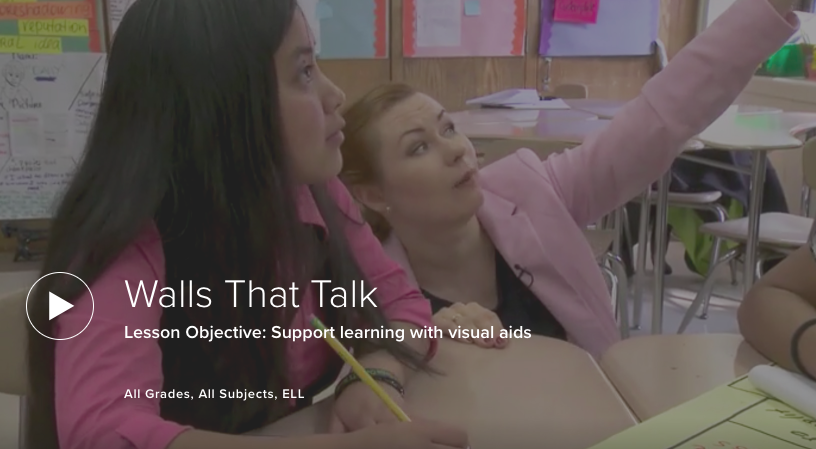I recently wrote a book researching the contributions and experiences of our partner schools at Bridges to Academic Success who work intensively with our newcomer immigrant Students with Interrupted and Inconsistent schooling (SIFE). Here, I highlight a few strategies from our research that emphasize getting to know your students’ contexts inside and outside the classroom and ways to target support for helping newcomer students adapt to U.S. classrooms.
- Create a Welcoming Classroom Culture
One of the most successful practices we found for supporting Students with Interrupted/Inconsistent Formal Education (SIFE) is creating a positive, safe classroom culture. Building this culture starts with teacher beliefs; if the teacher has a growth mindset and believes the students will succeed, they are more likely to do so (Wacker & Olsen, 2019). Teachers also need to create a safe space for students to practice their new English language skills and collaborate with their classmates (Auslander, p. 67). Partner activities and highly scaffolded routines and protocols help our students “learn school” and understand expectations of secondary classrooms. Students who are new to the country may not have been exposed to U.S. secondary classroom routines. For example, students may not know how to engage in productive partner work or a “think, pair, share” strategy without teachers explicitly modeling and explaining why and how this routine will benefit their learning.
- Utilize and Transform the Physical Environment
Classrooms need to create a print-rich environment. “Walls that Talk” can help you achieve this.

VIDEO: Walls That Talk
This is a best practice in which the classroom is transformed into an environment that includes anchor charts, visuals, word walls, and other physical classroom supports in English and the home language. These serve as a resource and foster student independence as students begin to learn English. In our Bridges classrooms, students often independently refer to resources on the wall such as sentence starters, key vocabulary, and instructions for following routines, instead of seeking teacher assistance.
- Implement Guided Reading & Writing
One important pedagogical routine and strategy found to make an impact in classrooms is a revised version of Guided Reading and Writing. In this version the teacher works with a small group of students who are at a similar reading or writing level to model and practice a skill together using text leveled at the students’ individual reading level or slightly higher. In newcomer SIFE classrooms, teachers draw on home language as a scaffold to support the learner and guide students to practice foundational literacy skills to support acquisition of the new language (Auslander, p. 57). Teachers set both language and comprehension goals with their students and progress monitor their growth throughout the year.
- Getting to Know Your Students: Counselor & Teacher Collaboration
SIFE and newcomer learners experience a host of issues outside the classroom that have direct consequences for their academic success. These include immigration status and maintenance, experiences of community violence, the pressures of having to work while going to school, negative stereotypes in their school or neighboring communities, and transience in living situations. In addition to these factors, many students are processing trauma. Here is one student example from our research that exhibits several of these difficulties as told by a school counselor:
Hernando first enrolled during the fall 2017 semester at almost 18 years old. His home language was Spanish, and he was an undocumented student from Guatemala seeking political asylum. He was held in a detention center in Texas for almost five months. He came to New York without any member of his immediate family and lived with an older male cousin who he had never met previously. When I first met him, he appeared to be suffering from PTSD (post-traumatic stress disorder). He was extremely withdrawn, provided only single-word responses and avoided all eye contact (Auslander, p. 43).
Our research shows counselors play an integral role in helping students like Hernando acclimate to their new circumstances and process traumatic experiences both pre- and post-migration. In addition, counselors can play a vital role in collaborating with teachers to find strategies that will support SIFE learners to succeed both personally and in school, particularly in making the transition to the demands of U.S. secondary classrooms. Increased collaboration between teachers and counselors is beneficial to the students in our schools and helps make school a safer place to learn and thrive.
For sample videos of our partner classrooms read my colleagues’ blog on the Teaching Channel or visit our website for more information.
Citations
Auslander, L. (2019). Creating Responsive Classroom Communities: A Cross-Case Study of Schools Serving Students with Interrupted Schooling. Lanham, MD: Rowman & Littlefield.
Wacker, C., & Olsen, L. (2019). Teacher mindsets: How educators’ perspectives shape student success. Washington, D.C.: Georgetown University. Retrieved from https://www.future-ed.org/wp-content/uploads/2019/06/Final-report_Teacher-Mindsets.pdf






